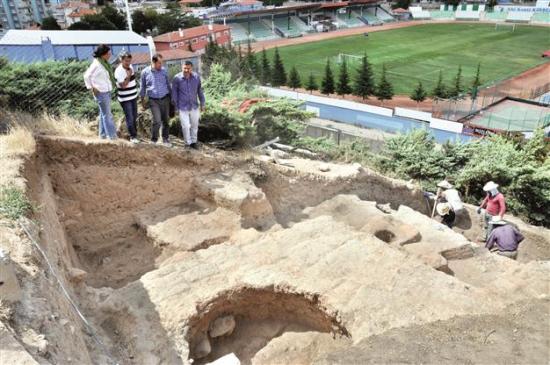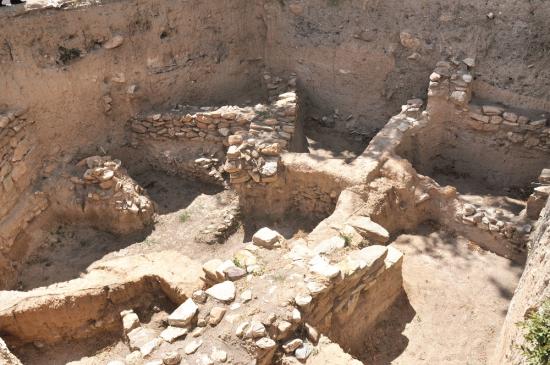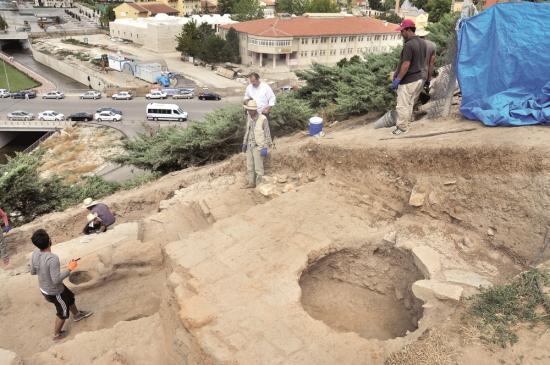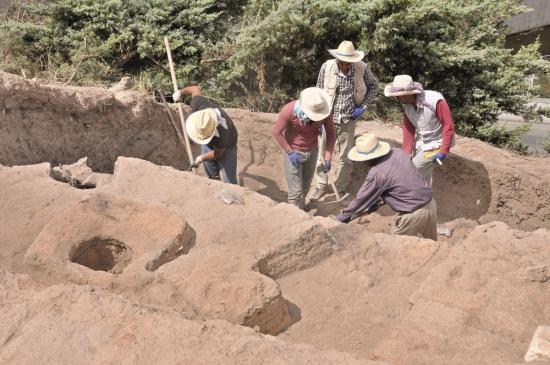Traces of the Ottoman, Seljuk, Roman, Byzantine and Hellenistic civilizations have been found layer by layer during excavations in Kırşehir’s Kalehöyük mound
Source - http://www.hurriyetdailynews.com/kalehoyuk-home-to-traces-of-five-civilizations-.aspx?pageID=238&nid=88521
 AA Photos
AA Photos
Remains from the Ottoman, Seljuk, Roman, Byzantine and Hellenistic civilizations have been unearthed from 11 meters underground during three years of excavations in the Central Anatolian province of Kırşehir’s Kalehöyük mound.
Conducted under the scientific consultancy of Ahi Evran University Archaeology Department Professor Işık Adak Adıbelli, the excavations have continued in five different layers and unearthed traces from five different civilizations. Works have reached up to the Iron Age in the fifth century, Adıbelli said, adding that the top layer was home to traces from the Ottoman era.
He said that in addition to the excavations in the southern portion of the mound, they had started digging on the northern section of the mound.
“We have reached up to 11 meters deep underground, unearthing five civilizations in five certain layers. Among them are architectural structures as well as layers of garbage pits. For example, we have mostly found garbage pits from the Roman era. The Seljuk-era structures gave damage to the Roman-era layer. This is why we can see garbage pits only. The findings from the Byzantine or the Eastern Rome eras come from the garbage pits, too.”
Adıbelli said they believed that there had been large buildings in the region in the Seljuk era. “The construction of this structure gave damage to the Roman-era layer. But we started to see the Hellenistic-era layer 25 meters below underground. This layer has been protected since the foundation of this big structure did not reach there. We have seen adobe and rubble walls as well as Ottoman-era ceramic pieces and coins.”
The team has begun unearthing adobe platforms from the Iron Age in the northern section and from the Hellenistic era in the southern area, Adıbelli said, while adding that they did not yet understand the function of the platforms.


Imported products show richness
The layers of the Seljuk and Hellenistic era were particularly strong, Adıbelli said.
“We have found a piece from a building cover that we believe is from the Seljuk era. This makes us think a very big and magnificent building [was here]. Also, there are very nice Hellenistic-era bead pieces that were imported from Phoenicia as well as amphora pieces with seals on them. All these were imported from some places and show us the richness and trade in this era. There are also a few skeletons. We observed that these people were very thin. This indicates a disease or maybe a famine,” the professor said.
Adıbelli said small pieces from the Hellenistic era gave some clues about that era. “An expensive glass bead from Phoenicia, a sealed candle from Rome or a sealed amphora from Sinop reveal that Kırşehir was the center of both the western and the eastern trade. We also have a Roman-era candle with the seal of a factory. This region was an active trade center in the Roman era, too.”

